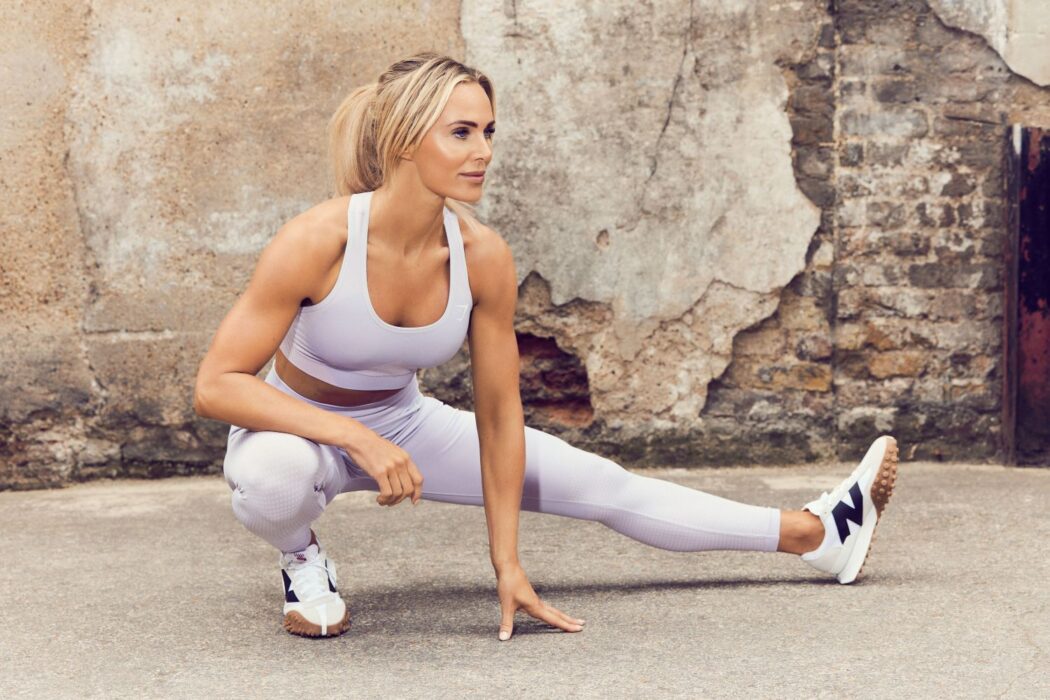5 key workout tips for a strong pelvic floor
By Sarah Lindsay, former Olympian and founder of Roar Fitness
Maintaining a healthy and strong pelvic floor is crucial for overall well-being and quality of life. The pelvic floor muscles play a vital role in supporting the pelvic organs, improving bladder control, and preventing issues such as pelvic pain and incontinence.

While many factors contribute to pelvic floor health, incorporating targeted exercises into your workout routine can make a significant difference.
Several factors can contribute to a weakened or dysfunctional pelvic floor. Understanding the causes can help you take preventive measures and make lifestyle adjustments to maintain optimal pelvic floor health, some common factors that can lead to pelvic floor issues are pregnancy and childbirth, age, hormonal changes, menopause, chronic straining during bowel movements, chronic coughing, sedentary lifestyle, obesity, high-impact activities, chronic health conditions, hormonal disorders surgeries and psychological factors.
Some workout exercises can help transform your pelvic floor and enjoy the benefits of a stronger, more resilient foundation such as.
- Engage in Kegel Exercises: Kegel exercises are a cornerstone for pelvic floor strengthening. These exercises involve contracting and relaxing the muscles that support the pelvic floor. To perform a Kegel exercise, simply contract the muscles you would use to stop the flow of urine midstream, hold for a few seconds, and then release. Start with a few repetitions and gradually increase the duration and intensity of the contractions over time. Incorporate Kegel exercises into your daily routine to enhance muscle tone, improve bladder control, and promote better overall pelvic floor health.
- Incorporate Deep Squats: Deep squats are an effective compound exercise that engages multiple muscle groups, including the glutes, quadriceps, and core. When performed correctly, deep squats also activate and strengthen the pelvic floor muscles. To perform a deep squat, stand with your feet shoulder-width apart, engage your core, and slowly lower your body as if you were sitting back into an imaginary chair. Keep your knees aligned with your toes, ensuring they don’t extend past your toes. Aim to reach a position where your thighs are parallel to the floor. As you rise back up, focus on engaging your pelvic floor muscles. Deep squats can improve pelvic floor strength, stability, and coordination.
- Integrate Pilates: Pilates is a low-impact exercise method that targets the core and promotes overall body strength, flexibility, and alignment. The principles of Pilates, such as breathing, pelvic placement, and core activation, directly contribute to pelvic floor health. Pilates exercises, like the pelvic tilt, leg circles, and the bridge pose, engage the pelvic floor muscles while promoting proper alignment and control. By incorporating regular Pilates sessions into your workout routine, you can strengthen and tone your pelvic floor while also improving posture and overall body awareness.
- Explore Yoga: Yoga is a holistic practice that combines physical postures, breathing exercises, and meditation to promote strength, flexibility, and mental well-being. Several yoga poses specifically target the pelvic floor, helping to improve blood circulation, release tension, and enhance muscle control. Poses such as Malasana (Yogi Squat), Baddha Konasana (Butterfly Pose), and Upavistha Konasana (Wide-Angle Seated Forward Bend) engage and stretch the pelvic floor muscles. Regular yoga practice can increase awareness of the pelvic floor, improve muscle tone, and promote relaxation, ultimately benefiting overall pelvic floor health.
- Embrace Cardiovascular Exercises: Cardiovascular exercises, such as brisk walking, swimming, or cycling, are excellent for overall health and fitness. They also indirectly contribute to pelvic floor health by maintaining healthy body weight and preventing constipation. Excess weight and chronic constipation can put a strain on the pelvic floor muscles, potentially leading to pelvic floor dysfunction. By engaging in regular cardiovascular exercises, you can reduce the risk of pelvic floor issues and ensure the optimal function of your pelvic floor muscles.

By incorporating the five workout tips mentioned above into your exercise routine, you can significantly improve the strength, flexibility, and overall health of your pelvic floor. Remember to consult with a healthcare professional before starting any new exercise program, especially if you have pre-existing pelvic floor issues. With consistency and dedication, you can transform your pelvic floor and enjoy the long-term benefits of a stronger foundation for a healthier, more vibrant life.












Comments